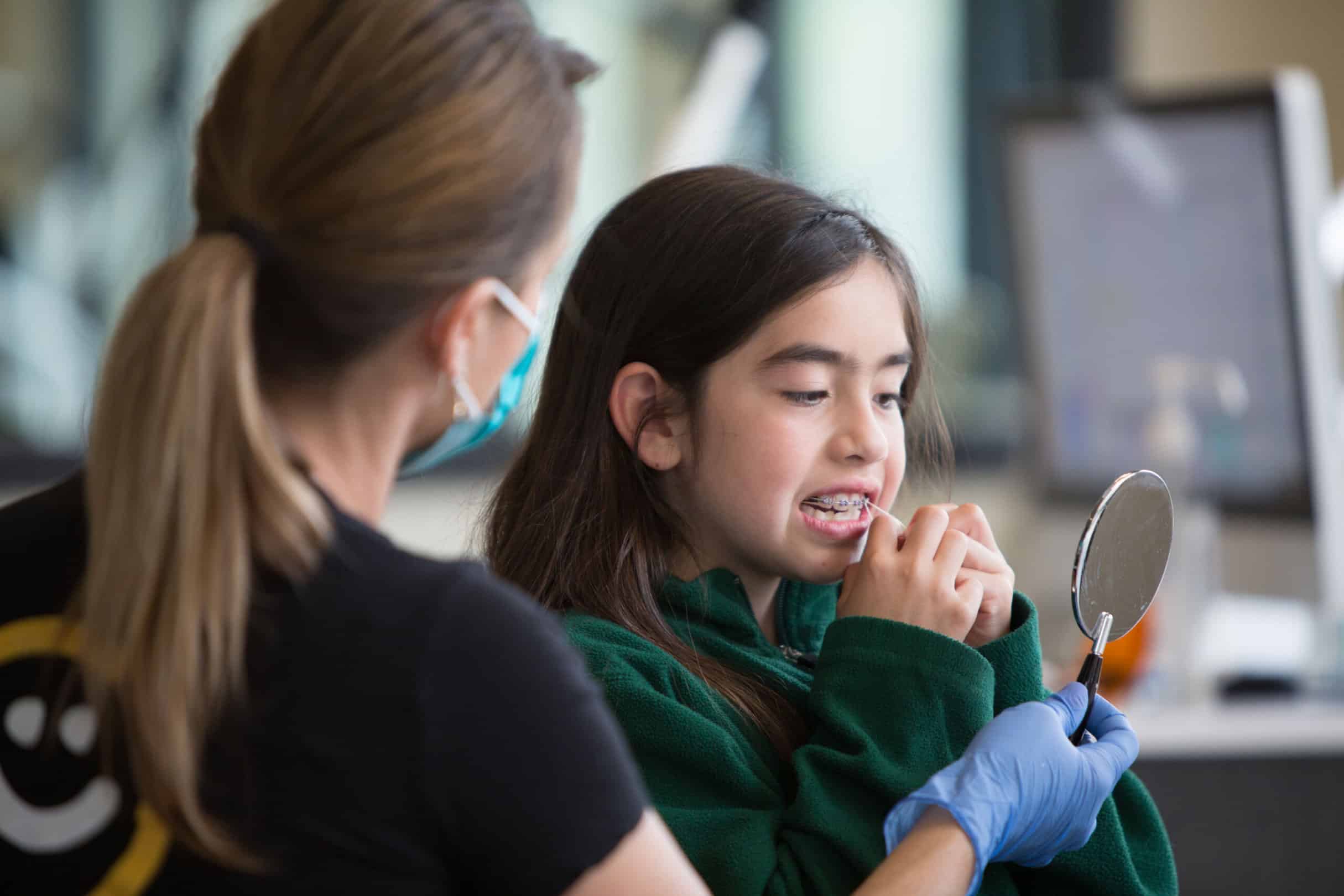It is rare for gums to bleed while flossing, but it does happen. They may even hurt a bit. Often, this happens because you’ve either flossed too hard or because you haven’t flossed in a long time. If there is pain while flossing, there are things you can do to ease that pain. But that pain could also be a signal of something more serious.
Here are some tips to ease the pain during and after flossing.
Be Gentle While Flossing
Perhaps the most obvious way to combat gum soreness and bleeding after flossing is to be gentle. Over-aggressive flossing can hurt! If you are too rough with your gums during flossing, it may be because you’re in a hurry or you’re out of practice on flossing properly. Slow down and be gentle when you floss, and you can reduce your soreness. Also, be patient and consistent. Your gums will get used to flossing over time and “toughen up.”
Use Waxed Floss
Waxed floss is better for flossing than unwaxed while your gums are sore or tender. The wax makes the floss more slippery, so it’s easier to move between your teeth and between your teeth and gums. Also, the wax serves as a bit of a cushion between the fibers of the floss and the gums. Both can make it easier to floss and easier on your gums when you do floss.
If you’re having trouble flossing with braces, use a floss threader to get around your brackets and archwires. Floss threaders are available at major retailers and pharmacies. They look like thin, plastic needles with giant eyes. You simply thread the floss through the eye and slide the floss threader under or over your archwire and through your teeth, allowing you to floss as usual.
Use a Water Flosser
If your gums are very sore, using a water flosser such as a Waterpik temporarily can give your gums time to heal while allowing you to floss. A water flosser shoots a high-speed, thin stream of water between your teeth and around other areas, including braces, to dislodge plaque and food particles. These devices often come with different attachments that allow you to get to hard-to-reach places in your mouth.
Water flossers also have the advantage of being less abrasive on your gums. The downside is their lack of scrubbing ability leaves a thin layer of plaque and bacteria on your teeth. It’s best to use these devices but to use dental floss at least once daily. However, water flossers will work temporarily while your gums heal. Then you can go back to using dental floss once a day while using your water flosser if you like.
Rinse With Warm Saltwater
Try rinsing with warm salt water if your gums are sore and bleeding after flossing. This will soothe your gums while accelerating their healing. Don’t get the water too hot, or you may scald your gums. You want about a teaspoon of salt in about 8 oz. of warm water. Rinse 2-3 times a day, spitting the water out rather than swallowing it. Do this until your gums heal.
See Your Dentist!
If pain and bleeding persist, they may be signs of something more serious than rough flossing — gum disease. Pain, swelling, redness, and bleeding are classic symptoms of gingivitis, an early-stage gum disease. It usually occurs as a result of poor oral hygiene. In other words, you’re not brushing your teeth twice a day, two minutes at a time, every day using a good fluoride toothpaste and a soft-bristled toothbrush.
Gingivitis can be treated easily at home simply by returning to good oral hygiene habits. However, if left untreated, it can lead to the more serious stage of gum disease, periodontitis. This can lead to infections, loose teeth, and even tooth loss.
If you suspect your bleeding gums may be from gingivitis, call your dentist right away. They may call you in for an examination and a full cleaning, and they may recommend additional steps, such as using a medicinal mouthwash, until your gums have healed.
Bleeding from Flossing
Bleeding from flossing may be scary, but it isn’t uncommon. Simple steps such as easing up on your scrubbing or using waxed floss may solve the problem. If it doesn’t, or if you have other issues, you can always contact us at Freeman Orthodontics with your concerns. As a patient, we can bring you into our San Jose, CA, office for an examination and recommendations on how best to treat the problem. Schedule an appointment with us, and we’ll take care of you!




